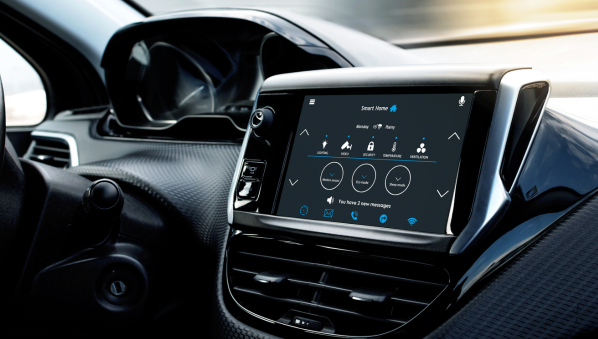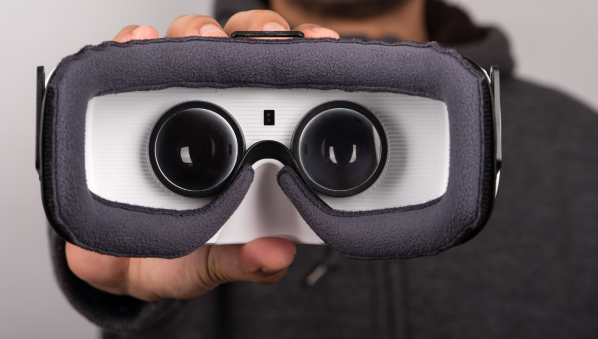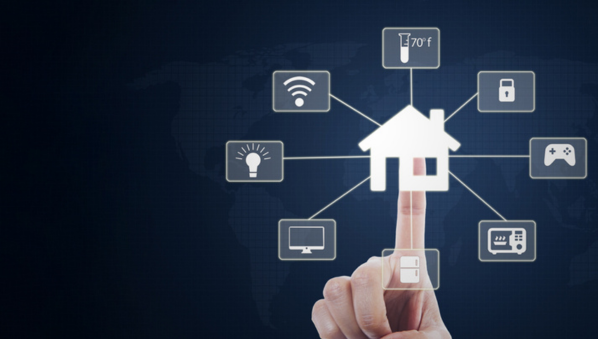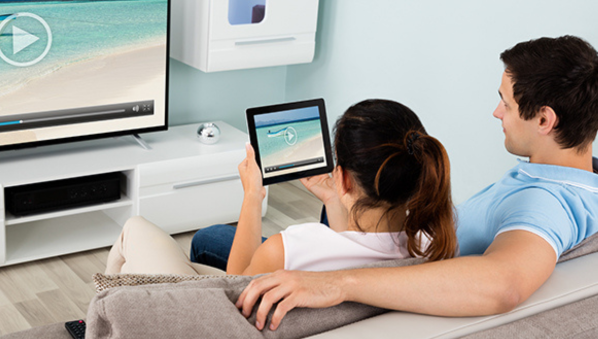Okay, now that you have your budget and smart home setup in mind, it’s time to start adding devices. At this point you need to decide whether or not you need a smart hub – such as Google Home, Amazon Echo or Samsung SmartThings.
To hub or not to hub?
If you’re going with just one or two devices, say a thermostat and a video doorbell, you can control them using your just smartphone without much hassle. But if you’ll be adding lots of components from different manufacturers, a smart hub is the way to go.
Why? Having a smart hub allows you to control all your components through one single device, rather than switching back and forth between different apps on your phone, which can become a nuisance when you’re dealing with multiple apps.
A smart hub allows you to control all your components with a single device, rather than switching between apps on your phone.
Take the Chicken Paprikash example we discussed earlier. With the proper smart devices you can find a great recipe from the web, stream a Netflix show for the kids in the den and start the dryer using just your voice – all while standing at your kitchen counter. Sounds great, right? But without a smart hub, you’ll need to juggle four or five different apps on your phone to make it all happen: Google for the recipe, Netflix and Chromecast for the kids’ program, the app to turn on the TV and the app that controls the dishwasher. That’s a lot of swiping back and forth.
Without a smart hub, all this app switching can defeat the purpose of setting up a smart home. The right hub will let you command all of these devices by voice, so it can be a sanity-saving investment: “Hey Google, play Dora on the family room TV.”
For basic setups, a smart speaker – like Google Home or Amazon Echo – can serve as your hub. For more advanced setups, those involving location-based automations (actions triggered as you pull up to the house, for example) you’ll need a dedicated smart hub like Samsung SmartThings or Wink.
Here are some of the questions we see asked most often about these devices:
Is Google Home a smart hub?
Google Home is a smart speaker that you can operate with simple voice commands. Among other things, it lets you enjoy your music, manage everyday tasks, and get answers to things you want to know – all hands free. But Google Home can also serve as a smart hub since it’s powered by the Google Assistant. That means you can control your compatible smart devices through Google Home. For example, simply ask Google Home to stream videos to your TV with Chromecast or to turn up your Nest thermostat. For customers who already own one or more Google devices, choosing Google Home as your hub may be a no-brainer.
Is Amazon Echo a smart hub?
Echo is Amazon’s line of smart speakers. These devices, such as the Amazon Echo Show, can act as smart hubs thanks to the Alexa voice assistant that comes built in. Alexa is compatible with many types of smart home devices, including smart plugs, home theater systems, door locks and more, making an Amazon Echo another good choice as a smart hub.
What products work with Google Home?
Over 1,000 smart devices from 150+ popular brands work with Google Home, including the Nest thermostat and the Canary home security system. With so much flexibility built in, Google Home is an excellent choice for your smart hub. Google Home lets you control compatible devices with your voice – lights, security cameras, TVs and others. Plus, it serves as a smart assistant, letting you get your calendar, reminders, information about your commute and more.
Which smart hub is best?
There’s no single best smart hub. It really depends on what products you have in your home. Google Home and Amazon Echo are two popular choices. But if you’re looking to go a step further with home automation, you might want to consider dedicated smart hubs like Samsung SmartThings or the Wink Hub. These can provide even more options for customization.
Of course, some people are more comfortable with certain brands. If you’re a Google fan, let’s say, you may want to stick with Google Assistant and Google Home-enabled products.
If you’re on the fence, here’s a simple way to help you choose: Consider all the devices you want to add to your home and then make sure that the smart hub you’re looking at will support them all. You can find a list of compatible devices on the hub manufacturer’s website. The good news is, if you want to add a new component down the road, products with the same general capabilities are usually available for the major smart home hubs.









